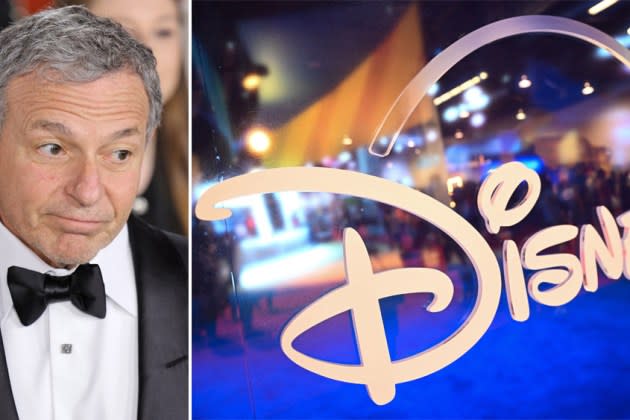Disney Cuts Streaming Loss, Takes $2.4B Charge For DTC Content Purge In Mixed June Quarter; Bob Iger Sees Cost Savings Topping $5.5B Target
- Oops!Something went wrong.Please try again later.

Disney saw direct-to-consumer losses shrink and adjusted EPS top estimates for the three months ended in June as CEO Bob Iger said the company’s on track to exceed $5.5 billion in anticipated cost savings.
Total revenue of $22.3 billion (down 2%) was shy of forecasts. Linear television was softer — a trend Iger called out in a controversial CNBC interview last month. A jump in Parks & Experiences, about a third of Disney’s sales, was driven by international parks and cruise lines. Domestic parks saw profit fall with lower attendance at Walt Disney World.
More from Deadline
2023 Premiere Dates For New & Returning Series On Broadcast, Cable & Streaming
ESPN Bet: Network Makes Wager On Sports Betting With Standalone Sportsbook App
There was a big $2.44 billion content impairment charge related to removing content from its DTC service and terminating third-party licensing agreements, plus another $210 million hit from severance. A broad restructuring Iger launched after returning to Disney’s helm last fall eliminated 7,000 jobs.
The company swung to a net loss of $490 million for its fiscal fourth quarter from a $4.1 billion profit the year before.
Subscribers: Disney+ had 146.1 million total global paid subscribers at the end of June, down from last quarter. Excluding Disney+HotStar (which lost 12.5 million in the June from the April quarter), core Disney+ subs rose, to 105.7 million from 104.9 million sequentially. The hit from HotStar was expected after Disney declined to renew its rights to hugely popular IPL cricket programming starting in the 2023 season.
ESPN+ subs were about flat at 25.2 million. Hulu’s 44 million SVOD subs were up from 43.7 million. Live TV+ SVOD was 4.3 million, for a 48.3M total Hulu.
At linear networks (U.S. and global) profit fell 23% to $1.9 billion on sales of $6.69 billion, down 7%. Stateside, Disney noted lower advertising revenue and viewership at ABC. Cable ad revenue rose, offset by higher sports programming costs for the NBA, and new motor sports programming.
“Our results this quarter are reflective of what we’ve accomplished through the unprecedented transformation we’re undertaking at Disney to restructure the company, improve efficiencies, and restore creativity to the center of our business,” said Iger in a statement. “In the eight months since my return, these important changes are creating a more cost-effective, coordinated, and streamlined approach to our operations that has put us on track to exceed our initial goal of $5.5 billion in savings as well as improved our direct-to-consumer operating income by roughly $1 billion in just three quarters. While there is still more to do, I’m incredibly confident in Disney’s long-term trajectory because of the work we’ve done, the team we now have in place, and because of Disney’s core foundation of creative excellence and popular brands and franchises.”
He’ll expound on a call with analysts shortly, accompanied by interim CEO Kevin Lansberry for the first time after longtime finance chief Christine McCarthy stepped down abruptly in June. It’s one of the many headaches facing the golden CEO whose return to the corner office last fall was met with sighs of relief from without and without the company. He’s been taking way more hits than usual as Disney struggles with a pivot to streaming, linear television woes and now a slowdown in U.S. parks amid strikes by Hollywood writers and actors.
Parks & Experiences saw sales up 13% at $8.3 billion — with increases of just 4% at domestic parks and 94% at internatinal parks, some of which were still plagued by Covid-related closures or capacity limited in the year-ago period.
International parks swung to a profit $428 million, while income was down 13% to $1.4 billion Statesides.
Best of Deadline
SAG-AFTRA Interim Agreements: List Of Movies And Series Granted Waivers
2023 Premiere Dates For New & Returning Series On Broadcast, Cable & Streaming
Hollywood & Media Deaths In 2023: Photo Gallery & Obituaries
Sign up for Deadline's Newsletter. For the latest news, follow us on Facebook, Twitter, and Instagram.
